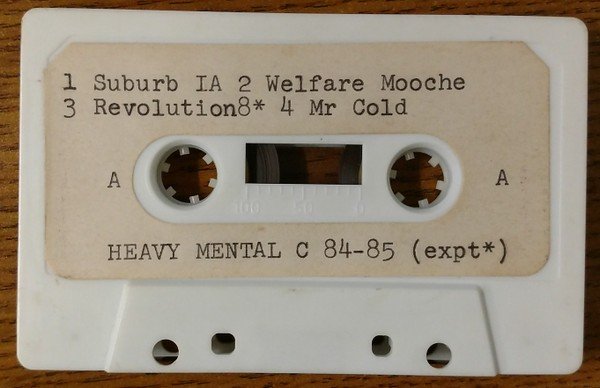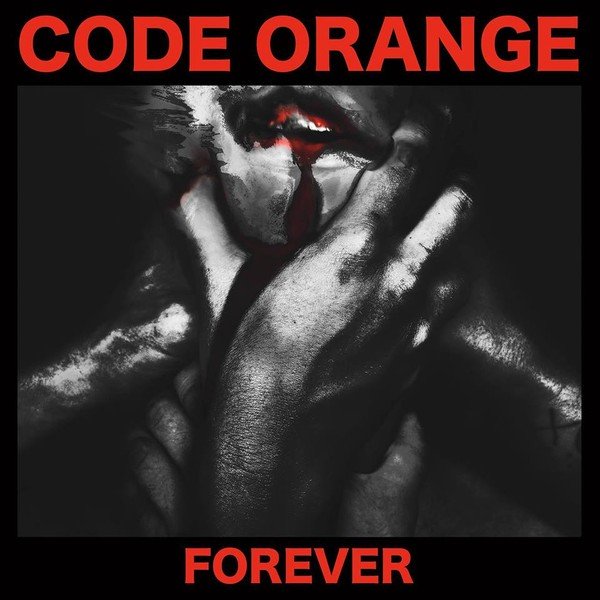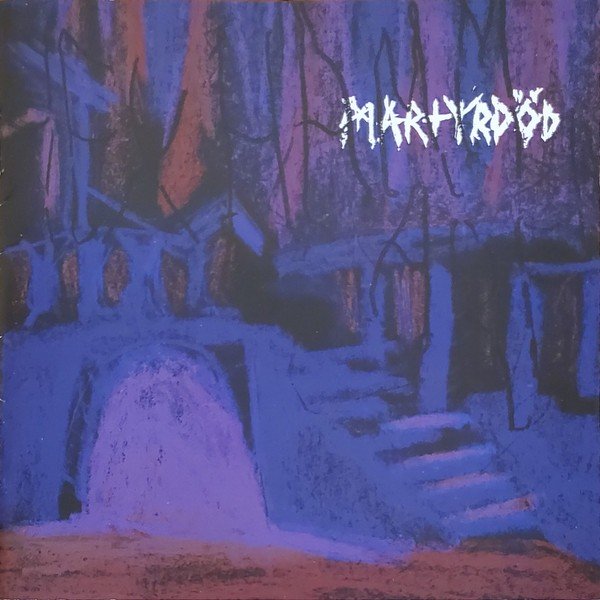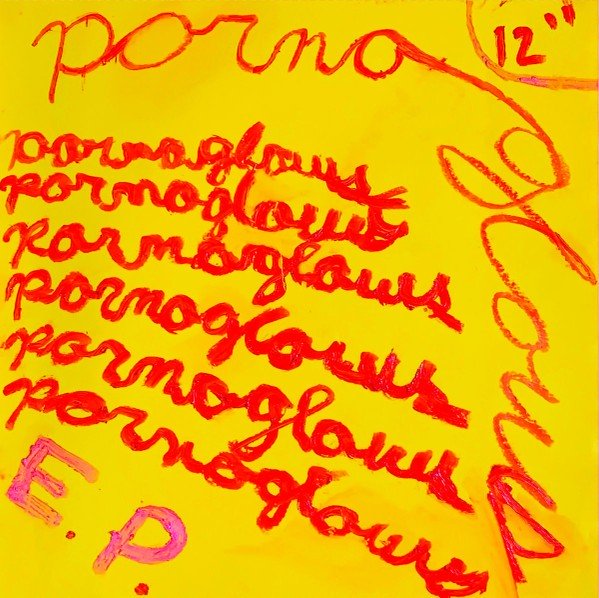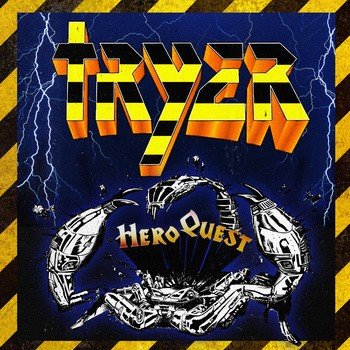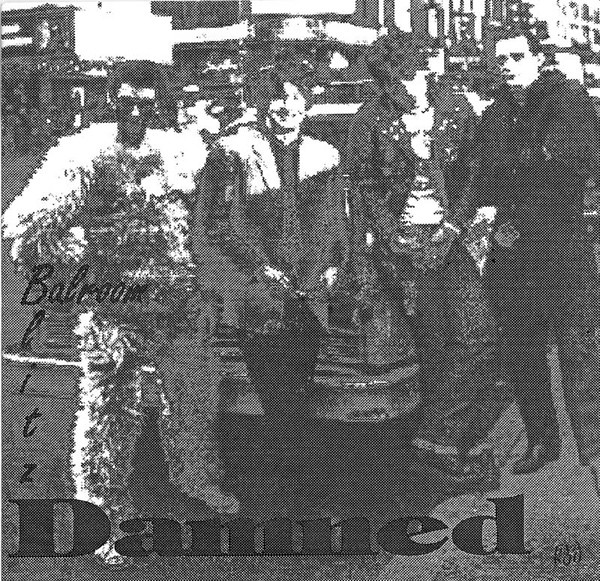
File download is hosted on Megaupload
David Byrne, Tina Weymouth, Jerry Harrison, and Chris Frantz could have called their debut record anything. But even with a world of potential titles at their disposal, the Talking Heads opted to matter-of-factly name their first record after the year it was conceived.
The art rock icons might have been going for an understated title with Talking Heads: 77, but over time it’s one that’s come to say plenty about just how diverse and exciting 1977 was for music. The record’s high-strung cross-pollination of funk, art punk, dance, and what would later become known as indie rock held a mirror up to a time marked by boundless musical innovation on a host of fronts. Punk was still hitting its stride as new wave, the still-burgeoning genre’s more pop-savvy sibling, started taking shape. Electronic music was in its exciting infancy. Elsewhere, bands and artists of all stripes were making music that refused to fall into categorical line. The carefully boxed-in walls that for so long confined popular music were crumbling, making room for new sounds and ideas that continue to inspire and influence the music we listen to today.
This isn’t to say that 1977 represented a complete break from tradition into uncharted musical waters. A list of the year’s chart-topping singles reads like an infomercial selling you all the biggest ’70s hits on one compact disc. The sounds of ABBA’s “Dancing Queen” filled every dance club while other period mainstays like Andy Gibb, Barry Manilow, Fleetwood Mac, and KC and the Sunshine Band also boasted songs that loomed large on the charts. But 1977’s lasting influence has little to do with what was happening on the surface and a lot more to do with what wasn’t. More than a decade after the pioneering work of bands like The Velvet Underground, The Stooges, The MC5, The New York Dolls, The Sonics, The 13th Floor Elevators, and countless others, louder, weirder, and artier strains of music had finally started to bubble up to the mainstream from the underground.
Punk rock led the way. In the musical equivalent to the Big Bang Theory, the genre’s crude simplicity left everything before it in the past and either directly or indirectly influenced almost all of the guitar rock that came after it. Just three years after forming in Forest Hills, Queens, Ramones released not one, but two punk landmarks with Leave Home and Rocket to Russia. Both sound virtually identical to one another, which is understandable for two records released 10 months apart. But together, they make for two of the most surprisingly influential records of the last 40 years. While bands like Foreigner, Toto, and Kansas were noodling away at overindulgent arena rock, Ramones distilled rock and roll down to its simplistic core. Picking up where their iconic self-titled debut left off, Leave Home and Rocket to Russia further retooled ’60s bubble gum pop by adding souped-up tempos, power chords, and bozo lyrics about boy-girl drama and teenage despondency. What’s more, they sounded great from a technical standpoint, thanks to Tommy Ramone and Tony Bongiovi’s polished but powerful production.
Ramones hit the world with arguably the year’s two best punk records, but they weren’t the only game in town. Their Sire label mates The Dead Boys, New York transplants from the understated rock haven of Cleveland, delivered one of the best punk debuts of all time with Young, Loud, and Snotty. While Joey, Johnny, Dee Dee, and Tommy had an endearing charm and wayward innocence to them, The Dead Boys, led by hard-living frontman Stiv Bators, imbibed in a more street-tough breed of American punk. “I don’t need anyone/ Don’t need no mom and dad,” Bators croaks on Young, Loud, and Snotty’s legendary opening track, “Sonic Reducer”. The debut bristles with sneering conviction, and there’s hardly room for a false note anywhere on the record’s 10 tracks, beneath the raw energy of which lay plenty of insane hooks (“What Love Is”, originally recorded by legendary Cleveland proto punks Rocket from the Tombs, most recently surfaced thanks to fictionalized rockers the Nasty Bits on HBO’s short-lived drama Vinyl).
Punk had officially made its mark on American soil in 1977, but the genre’s growing influence overseas in England has proven equally influential. The genre offered bands the perfect forum for railing against growing unemployment and other social ills plaguing the UK in the late ’70s. The Clash were hardly the first band to use music as a tool for social commentary, but the band’s white-hot debut might be the best example of rock and roll as a medium for protest. With tracks like “London Burning”, “White Riot”, and “Career Opportunities”, The Clash augmented its pissed-off message with punk fire power. If Bob Dylan and Woody Guthrie before them took a more subtle, lyrical approach to getting their message across, The Clash proved how effective punk rock’s volume and fury could be in helping double-down on the dissent.
The Clash were earnest in their approach to flaunting authority, but the same could hardly be said about the Sex Pistols. With the help and marketing savvy of manager Malcolm McLaren, the Pistols became the poster children for punk rock’s anti-authoritarian insolence. The band admittedly relied far more on gimmickry and image than many of their peers (Sid Vicious may be a punk icon, but it’s no secret he could barely play bass), but that fact takes nothing away from the band’s 1977 debut. In 34 sneering minutes, Never Mind the Bollocks, Here’s the Sex Pistols takes dead aim at the Crown (the Pistols infamously trolled the Queen’s Jubilee by playing “God Save the Queen” on a riverboat ride along the Thames River) while the record’s plighted themes of class war and social disenfranchisement spoke to a frustrated, marginalized generation. The Pistols didn’t survive long enough for a proper follow-up, which only makes Bollocks all the more impressive. In one record and 11 songs, the band helped define not only the sound of punk rock, but also its attitude and image. In doing so, they also helped solidify the genre as a legitimate force in popular music.
If the intensity of The Clash and Sex Pistols occasionally felt a little like all work and no play, Buzzcocks and The Damned brought some levity to the mix. The four-track EP Spiral Scratch, which the Buzzcocks self-released on their own New Hormones label in January 1977, arrived just over a year ahead of the band’s first proper full-length. But the band’s fiery mix of hooks, melodies, and punk energy was already well in place, making the EP one of the earliest entries in what would become pop punk. The aptly titled Damned Damned Damned, meanwhile, brought a campy, cartoonish sensibility to punk that refused to take itself too seriously. Dave Vanian has steered The Damned through numerous lineups and musical changes over the past four decades, but the proto goth band’s first record remains its most enduring sonic strike.
Others in punk’s first wave were pushing a little more deliberately against the genre’s walls. Back in New York, Television wisely took its time crafting Marquee Moon. The effort that went into it is evident: the record’s complex, jazz-like arrangements, the interlocking guitar work between Tom Verlaine and Richard Lloyd, and Billy Ficca’s flare for expansive drum fills. Marquee Moon is the punk record that refused to be defined by punk, a bookish, stylishly ambitious affair that further reinforced punk’s aversion to rules (somewhere future members of Sonic Youth were taking close notes). Former Television members also got in on experimenting with punk’s boundaries. Ten months after Marquee Moon’s February 1977 release, Richard Hell graced the world with Blank Generation. With assistance from his backing band, the Voidoids, Hell, always more poet at heart than a musician, took his love of Velvet Underground, The Beatles, The Stooges, the Stones, and others and wrapped it into his own warped formula. In England, Wire compressed the Ramones’ simple song constructs into sub-two-minute art punk blasts on Pink Flag, a record whose influence found its way over time to bands as diverse as the The Minutemen, REM, and Blur, to name a few.
New wave also began to emerge as a further evolution from punk. In England, Stiff Records released the debut from an up-and-coming songwriting maverick named Elvis Costello. After years spent gigging in and around London and Liverpool to little fanfare, My Aim Is True, released in July 1977, introduced the world to one of pop music’s great sophisticates. Costello channeled punk rock’s anger to settle personal scores, and by year’s end Rolling Stone crowned it the best record of the year. Beyond the music, the record’s cover art had a lot to say about the state of music in 1977 by itself. “Elvis Is King” the lettering read across the backdrop of a bespectacled Costello posing for the camera. With Elvis Presley’s death just one month later, it’s hard not to look at the cover in retrospect with some measure of cosmic significance.
Stiff also released New Boots and Panties!!!, the debut record from Ian Dury and what would become his backing band, the Blockheads. Like Costello, Dury’s music was born out of the UK’s growing pub rock scene, and his debut mashed funk, early American rock and roll, dance, and pop music into its own distinct concoction. In another indication of audiences’ willingness to take a flier on new music, the record became a hit in spite of, or perhaps because of, its deliberately being left of center. Singles “Hit Me with Your Rhythm Stick”, “Reasons to Be Cheerful Part 3”, and “What a Waste” each made their mark on the UK singles chart. Elsewhere, Graham Parker released the equally raw and diverse-sounding Stick to Me, marking his first collaboration with his long-running backing band, The Rumour. The Jam also brought some sass and style to the yet-to-be-titled new wave movement. In the City, the mod punks’ debut, owed as much to the likes of The Who, The Kinks, and The Creation as it did the shearing guitar chords on its surface.
While 1977 gave rise to a host of fresh new musical faces, it also was the year that some old dogs tried their hands at some new tricks. Iggy Pop resurfaced with not one, but two records in The Idiot and Lust for Life. Just two years prior, Pop was in the grips of a crippling heroin dependency that also led him to spend time in a mental institution. With the help of David Bowie, The Idiot gave Pop a new creative lease. The record marks an almost jarring departure from the hedonistic proto punk charge he once led with The Stooges, giving in to the artier, more experimental direction Bowie was moving him in. The Star Man also ran herd on Lust for Life, which brought Pop’s garage rock bona fides back into clearer focus.
Bowie’s collaborations with Iggy gave the former Stooge frontman a much needed creative and personal boost, but he used much of that same inspiration for himself on Low. The record was the latest in what would be a career-spanning series of musical evolutions for Bowie, and it’s arguably one of his best. Co-produced with Tony Visconti and Brian Eno, Low playfully dives into avant pop, especially the minimalist electronic and ambient music Eno had already begun experimenting with in his post-Roxy Music efforts. The record also owes a debt of influence to Kraftwerk. Formed in 1969 in Dusseldorf as part of Germany’s growing experimental rock scene, the band, led by Florian Schnieder and Ralf Hutter, began flirting increasingly with synthesizers and electronic music by the early ’70s. Kraftwerk’s first grand musical statement came with the minimalist Autobahn in 1974, but it was the release of Trans-Europe Express three years later that exposed electronic music’s pop potential. The record’s influence on dance and electronic music is obvious, but it was only the tip of the iceberg. Just a few short years later, Afrika Bambaataa used the record’s title track as the centerpiece of “Planet Rock”, one of the earliest entries into the hip-hop cannon. Back in New York, Martin Rev and Alan Vega were also among the earliest adopters of electronic music. The duo dropped Suicide’s seminal electro-punk debut, which menacingly foreshadowed the emergence of dance music, electronica, new wave, and alternative music coming just around the bend.
Not all of the year’s groundbreaking musical innovations drew power from ugly, underground impulses, however. Donald Fagen and Walter Becker were at the peak of their proggy, jazz-pop powers when Steely Dan released Aja in September of 1977. Boasting the contributions of close to 40 musicians, the record is the rare complex pop record that wasn’t commercially done in by its own sense of adventure. Fagen and Becker went all in, with all but two of the record’s seven tracks clocking in at more than five minutes. But millions of listeners went along with them for the ride on the strength of singles “Deacon Blues”, “Peg” and “Josie”. And while the songs on Aja still stand as achievements by themselves, the record also continues to stand up as a model of expert production. Steely Dan was always first and foremost a studio band (the band retired from touring in 1974 before reuniting years later), and Aja represents the apex of the band’s commitment to production value.
It’s been four decades, but the music of 1977 hardly feels that old. Maybe that’s because subsequent generations of musicians and fans have refused to let it grow stale. Giorgio Moroder’s From Here to Eternity still sounds relevant, thanks in no small part to Daft Punk’s not-so-subtle genre homage Random Access Memories in 2013. It’s just as easy to see how Radiohead’s Kid A or LCD Soundsystem’s Sound of Silver might have inspired a new generation of fans to find their way back to Kraftwerk or how the success of Green Day, Rancid, and countless others have helped keep Ramones and The Clash in vogue over the years. Music only lives in the past to the extent that fans, bands, and critics let it. To that end, the greatest complement that can be paid to the musical year that was 1977 is that we’ve cared enough to keep it vital.

















